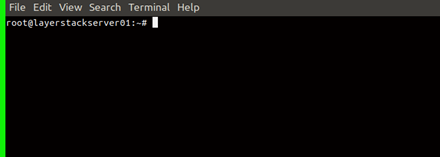How to use the Joomla! One-Click Install on LayerStack Cloud Servers
Joomla! is a powerful choice to build a website irrespective of its size. It is free and extendable which is separated into front-end and back-end templates (administrator). Joomla! is developed using PHP, Object-Oriented Programming, software design patterns and MySQL.
Joomla! has its primary advantages listed below:
- Multilingual
- Well Supported
- Easy Updates
- Powerful extensibility
- Integrated Help system
Layerstack has come up with a new feature where you can deploy Joomla! with a single click on your Cloud Servers for all regions.
HTTP link to log in to Joomla! Dashboard:
http://<serverip>/administrator/
Getting started with our One Click Joomla! installed Cloud servers
| Software | Description |
|---|---|
| MySQL server | Backend database for Joomla! |
| PHP 7 | Joomla! requires PHP 7 environment to operate |
| Nginx | The web server used for the serving contents |
| Joomla! 3.0 | Latest version of Joomla! CMS |
| Joomla! template | Default template installed along |
The below are the required fields to be entered by the user in order to complete the Joomla! installation.
| Field | Description |
|---|---|
| Site Name | A Website name for the Joomla! website as the title |
| Admin Email Address | Email address of the Joomla! admin user |
| Admin Username | This is the username of Joomla! admin user |
| Admin Password | A strong password suggested to login |
| Database Details | MySQL is a common DB along with hostname, username, password and prefix |
Accessing the Joomla! site after deployment
This section describes how to access the Joomla! application once the installation is done. By default, the Joomla! will be accessible by accessing your Cloud server’s IP address in a browser of your choice. Please follow the below steps:
Log in to LayerPanel2 and click on
Deployfrom the sidebar on the left side.Choose
Joomla based on ubuntu 20for the server OS and proceed to order the Cloud Servers.
After the server is activated, click on
Servicesfrom the sidebar on the left side and further selectCloud Serversfor listing out your Cloud Servers.
From the list of Cloud Servers, find your newly deployed Cloud Server with Joomla! one-click option.
In the below example the server IP is
123.123.123.123. You can copy the IP address using the Copy to clipboard icon adjacent to the IP address and then can paste it in any browser of your choice.
The page loads with the Joomla! homepage.

You can now log in to the
Joomla! admin dashboardby accessing the below link and personalizing the appearances for your website. The user can inputadminas the administrative username andserver's passwordfor logging into the admin dashboard of Joomla!.http://<serverip>/administrator
NOTE: Replace serverip in the above link with the actual IP address of your Cloud Servers.
How to link your domain name for your Joomla! Website?
You may have registered your domain with any global domain registrars, so you would be able to manage the DNS settings of your domain under the respective domain registrar’s account. To link your domain name to the Joomla! application to make it active under the domain in LayerStack Cloud Servers, you would require to set up A record entry for the website against the Cloud server’s IP address. This will resolve the domain name to the particular server IP.
NOTE: Pointing A record to the server IP is to be done at your Domain Registrar’s end. The DNS settings may vary according to the Registrar providers.
For more clarity you may refer to our DNS record setup tutorial:
How to update NameServer and DNS record for LayerStack Cloud Servers
Once the domain has been set up, it is required to change the Site URL by assigning the domain name to the Joomla! website. Follow the below steps:
Log in to the Cloud Servers via SSH.

Navigate to the location
/var/www/joomlaand locate the fileconfiguration.php.

To edit the site URL of the Joomla! website, open the
configuration.phpusing theVI editorand locate the line.public $live_site =Enter the
full URLof the site name against this variable as shown in the screenshot:
Once entered the changes, save the file using key combinations
Escapekey and ‘:wq!’.
4) Once everything is done, clear your Joomla! cache data. This will finalize the steps to deploy Joomla! with your Cloud Servers.
